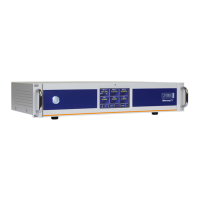MercuryiTC
©2014 Oxford Instruments Omicron NanoScience. All rights reserved.
Page 37
4 HOW TO MEASURE AND CONTROL
TEMPERATURE
Standard MercuryiTCs are fitted with one temperature board and one heater board. The
temperature board is used to measure temperature and is normally combined with the heater
board to control the temperature. The iTC uses a PID loop to control each heater (see chapter
14 for information on PID loops). The control system includes a “dead-man’s-handle” timer to
confirm that the control loop is operating. If the control loop stalls, the heater output is disabled.
A temperature sensor board can also be combined with an optional auxiliary I/O daughter board
to control a stepper motor. This is commonly used to control the motorised valve in a
continuous-flow cryogenic cooling system.
The iTC can accept the following sensor types:
• Negative temperature coefficient (NTC) resistance
• Positive temperature coefficient (PTC) resistance
• Thermocouple
• Silicon diode
Each input can be read at a maximum rate of 10 Hz. The iTC can detect short-circuit inputs and
open-circuit inputs. The heater output is disabled if a faulty sensor is detected.
The iTC contains a temperature sensor that is used to compensate for fluctuations in ambient
temperature.
This chapter covers the following topics.
• Cabling requirements
• Configuring the temperature sensor
• Configuring the heater
• Configuring the heater control loop
• PID control and PID tables
• Configuring the gas control loop (optional)

